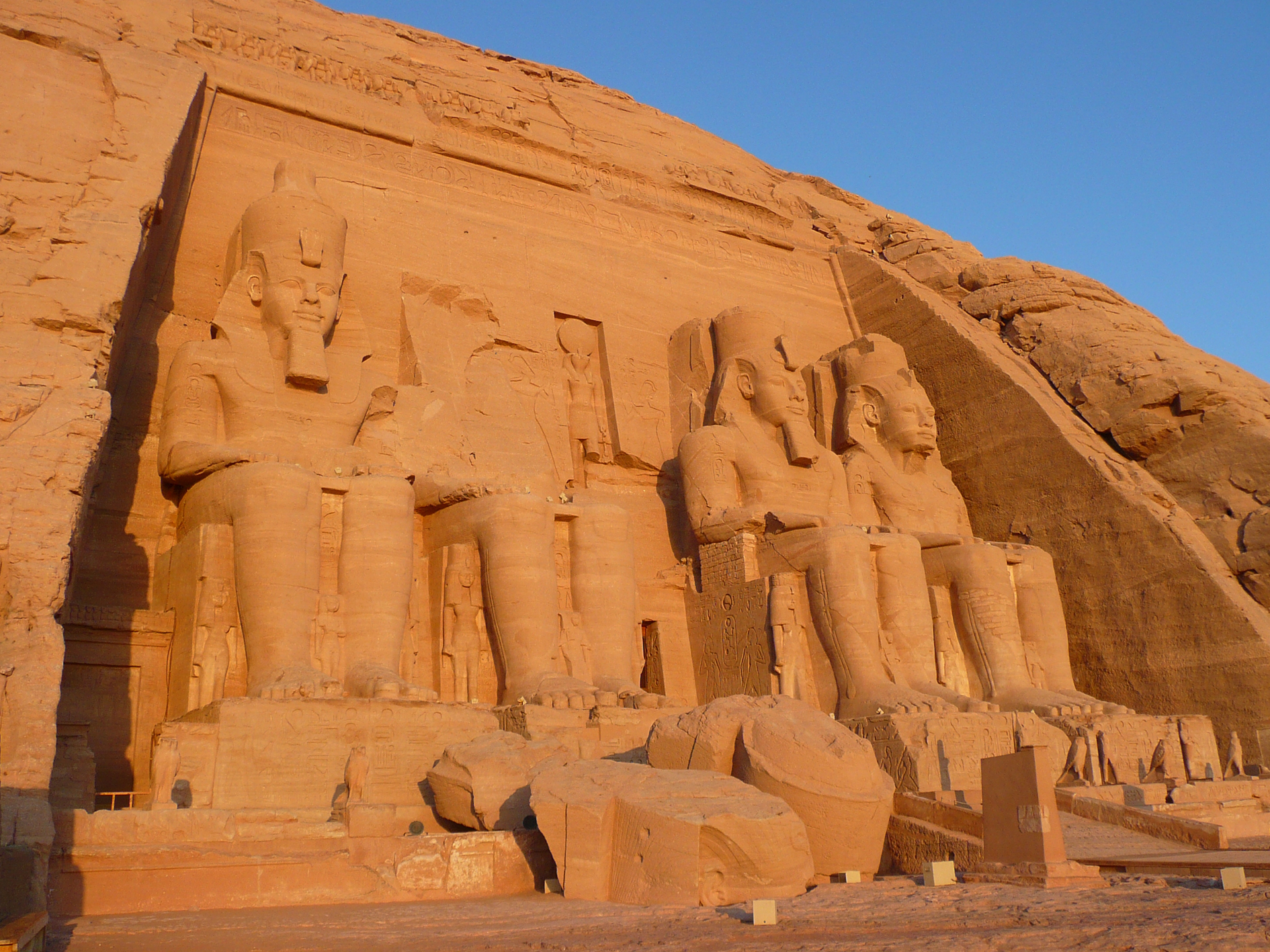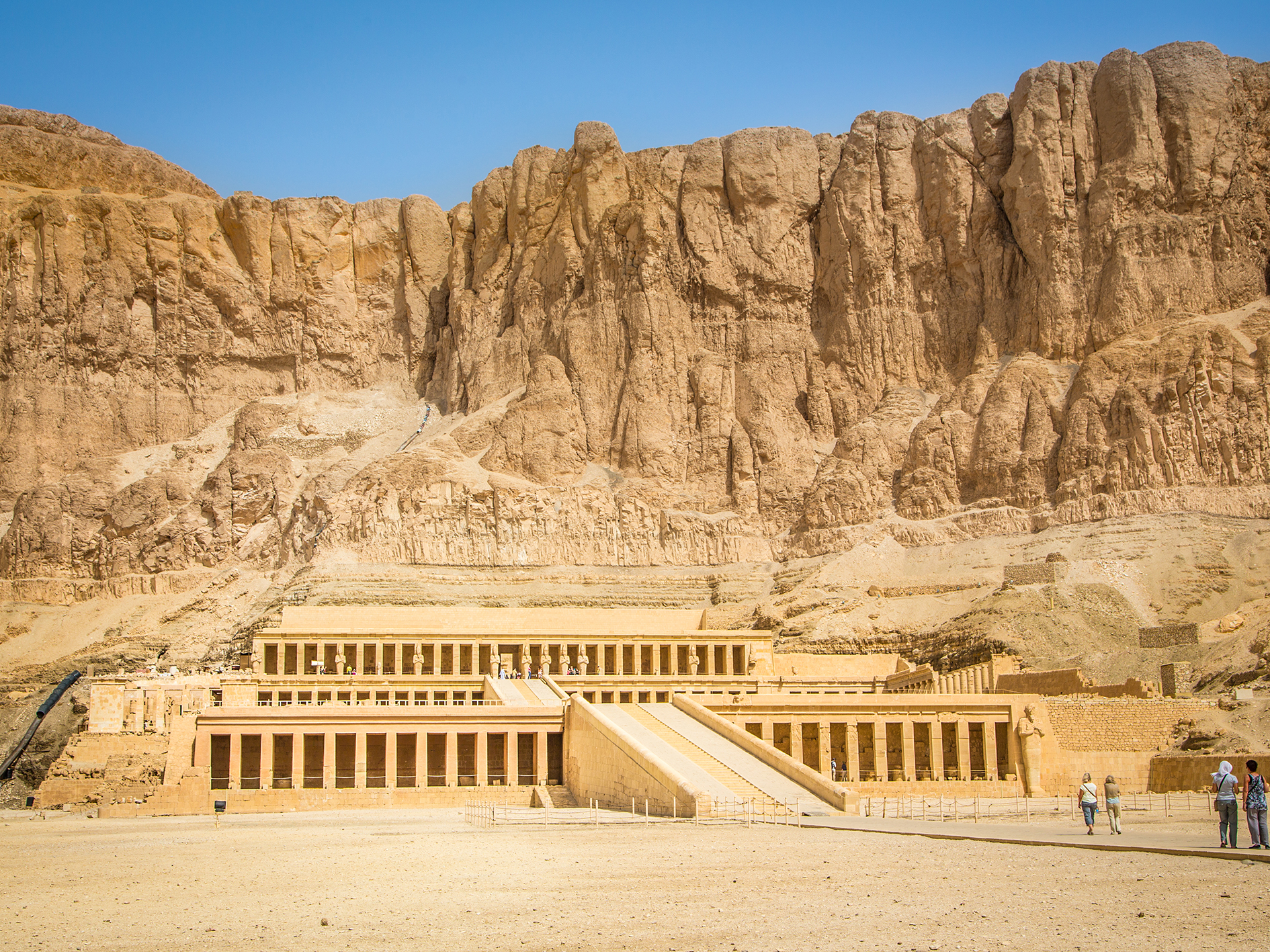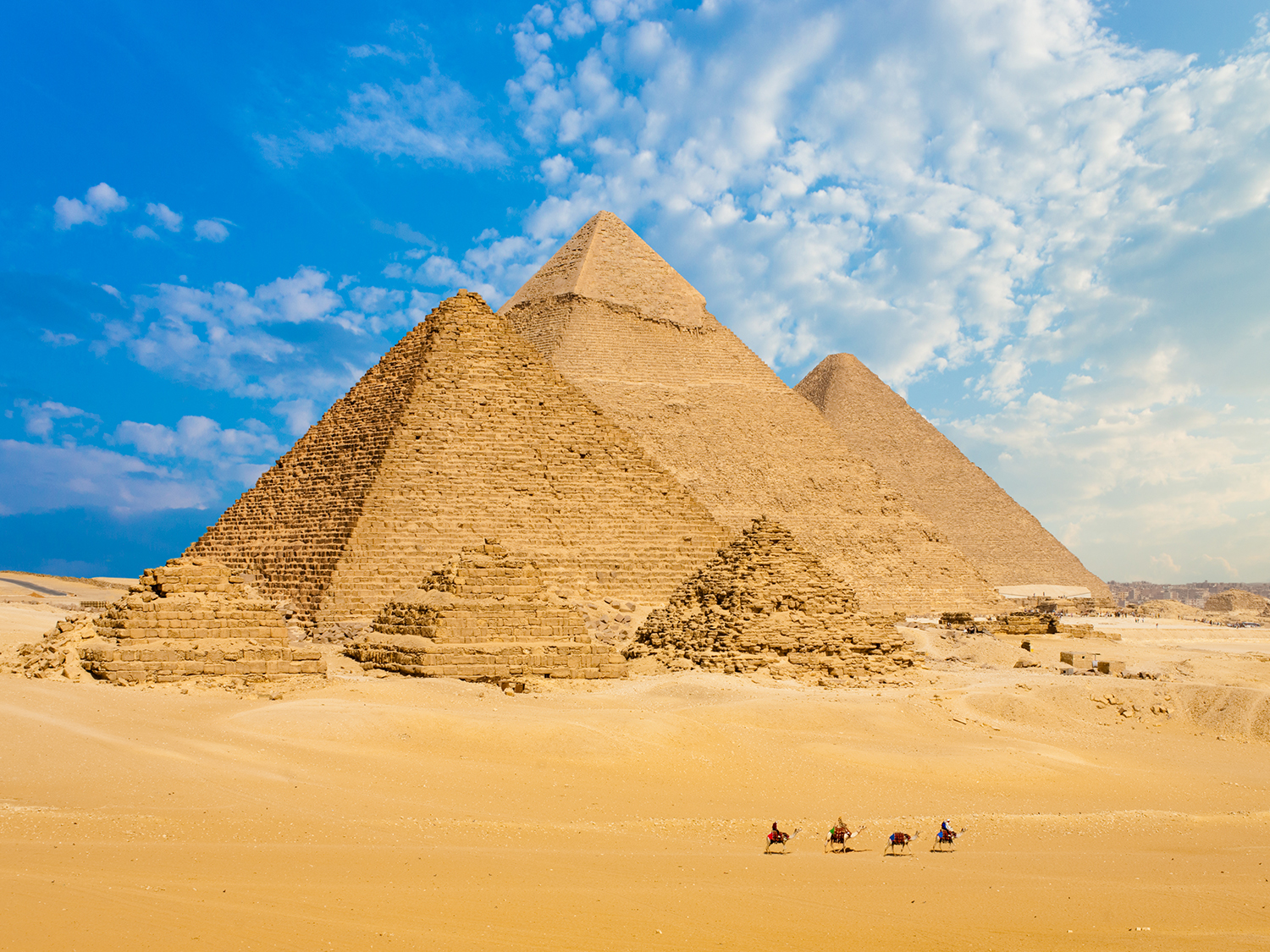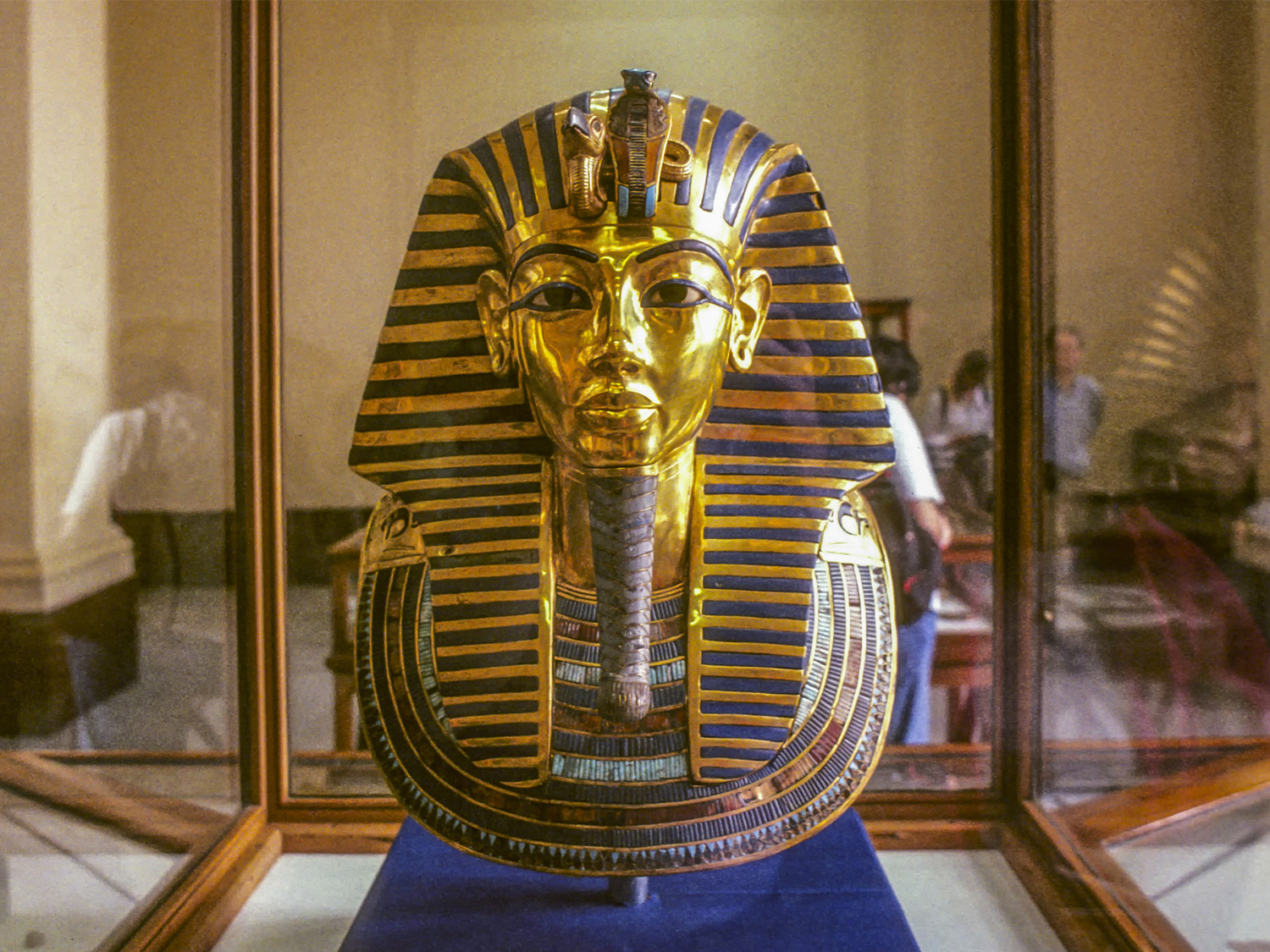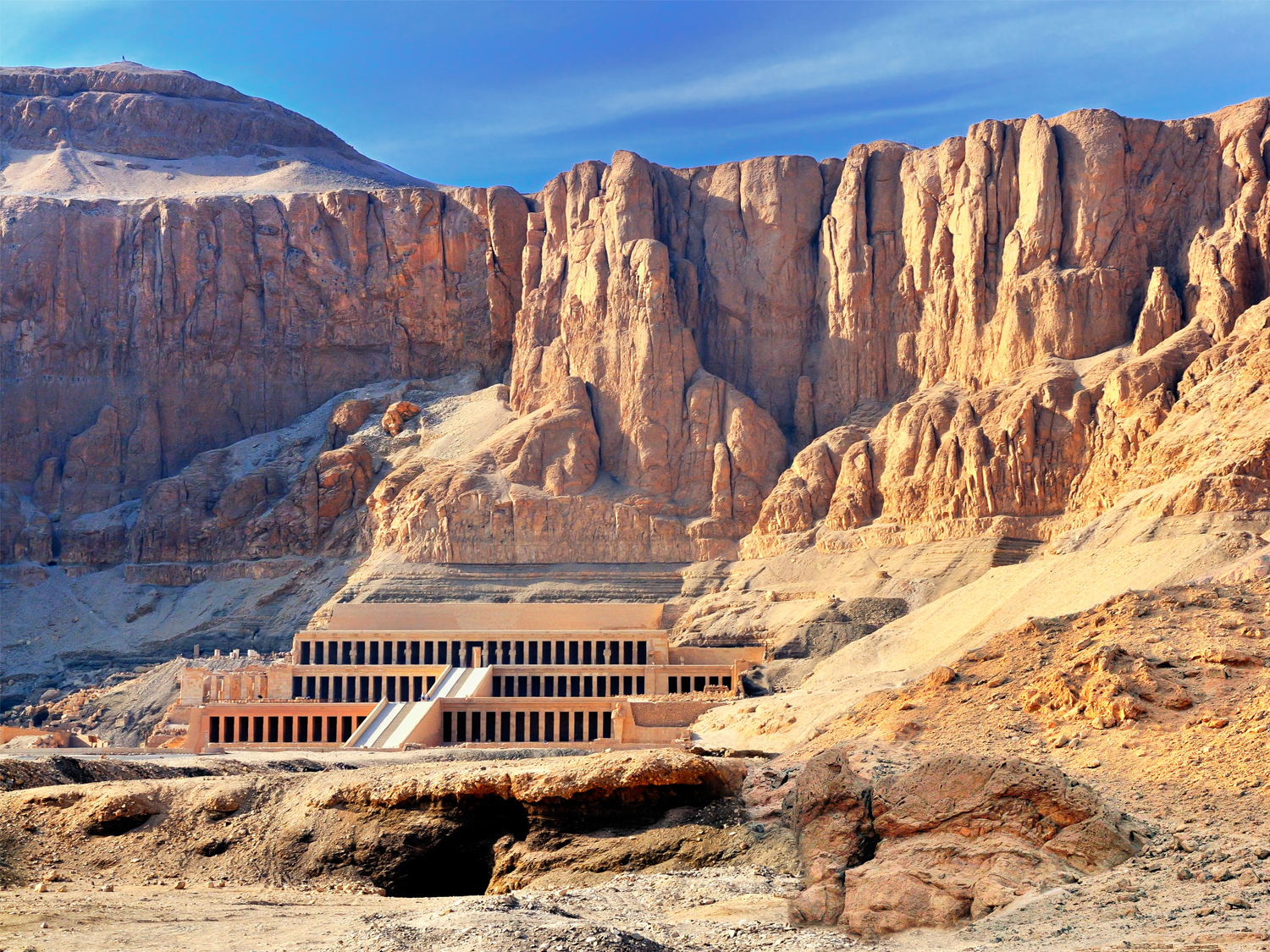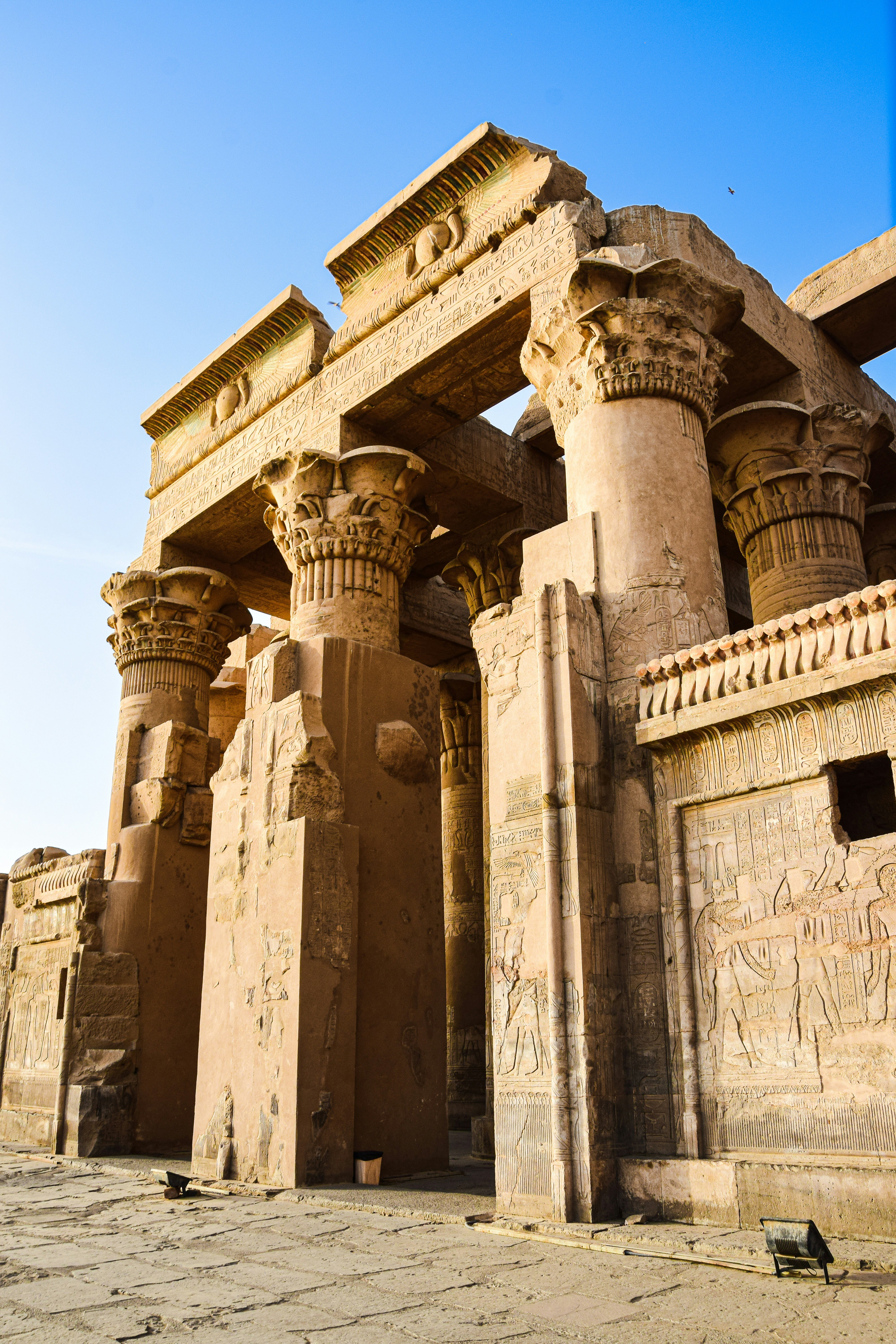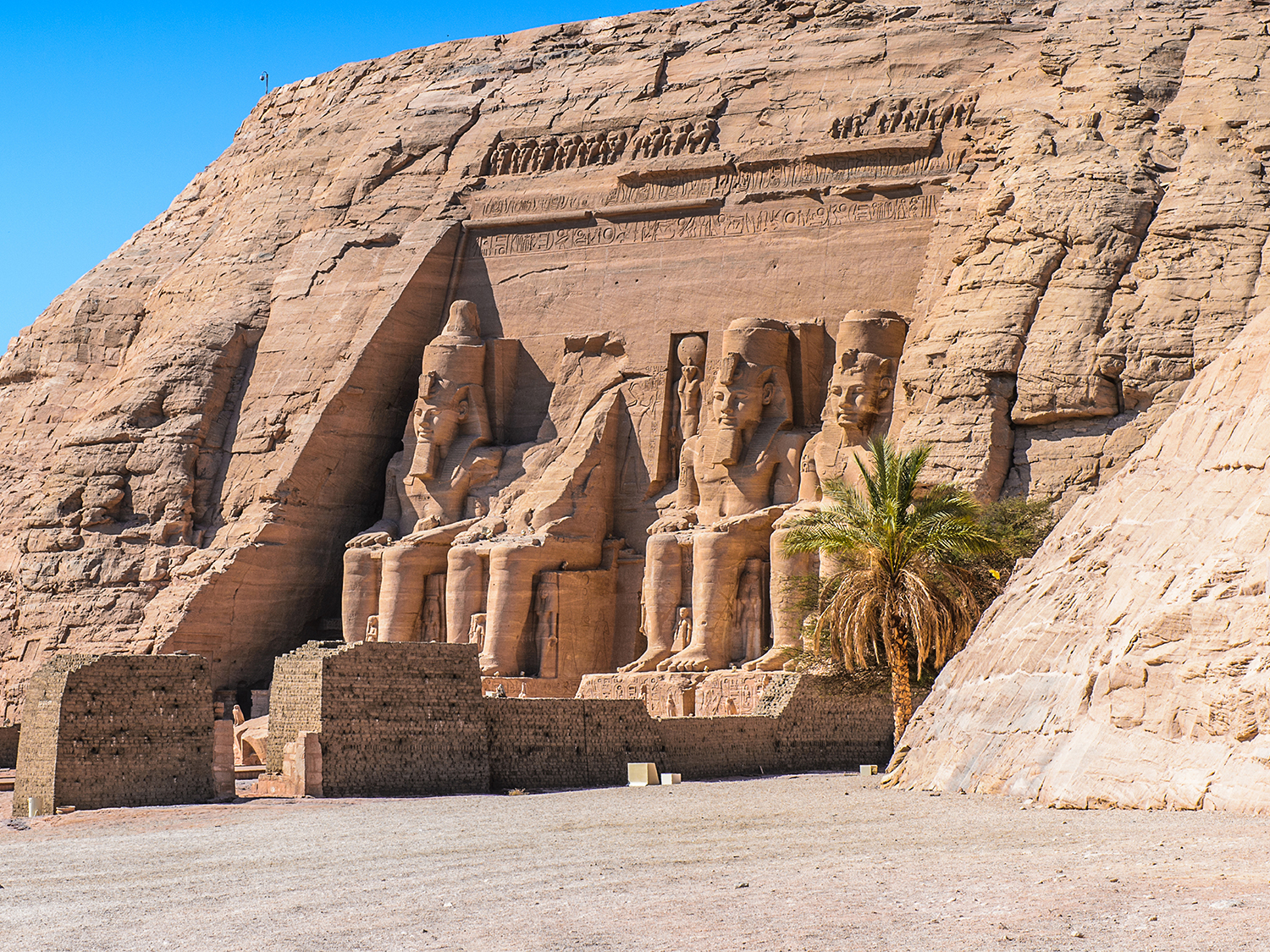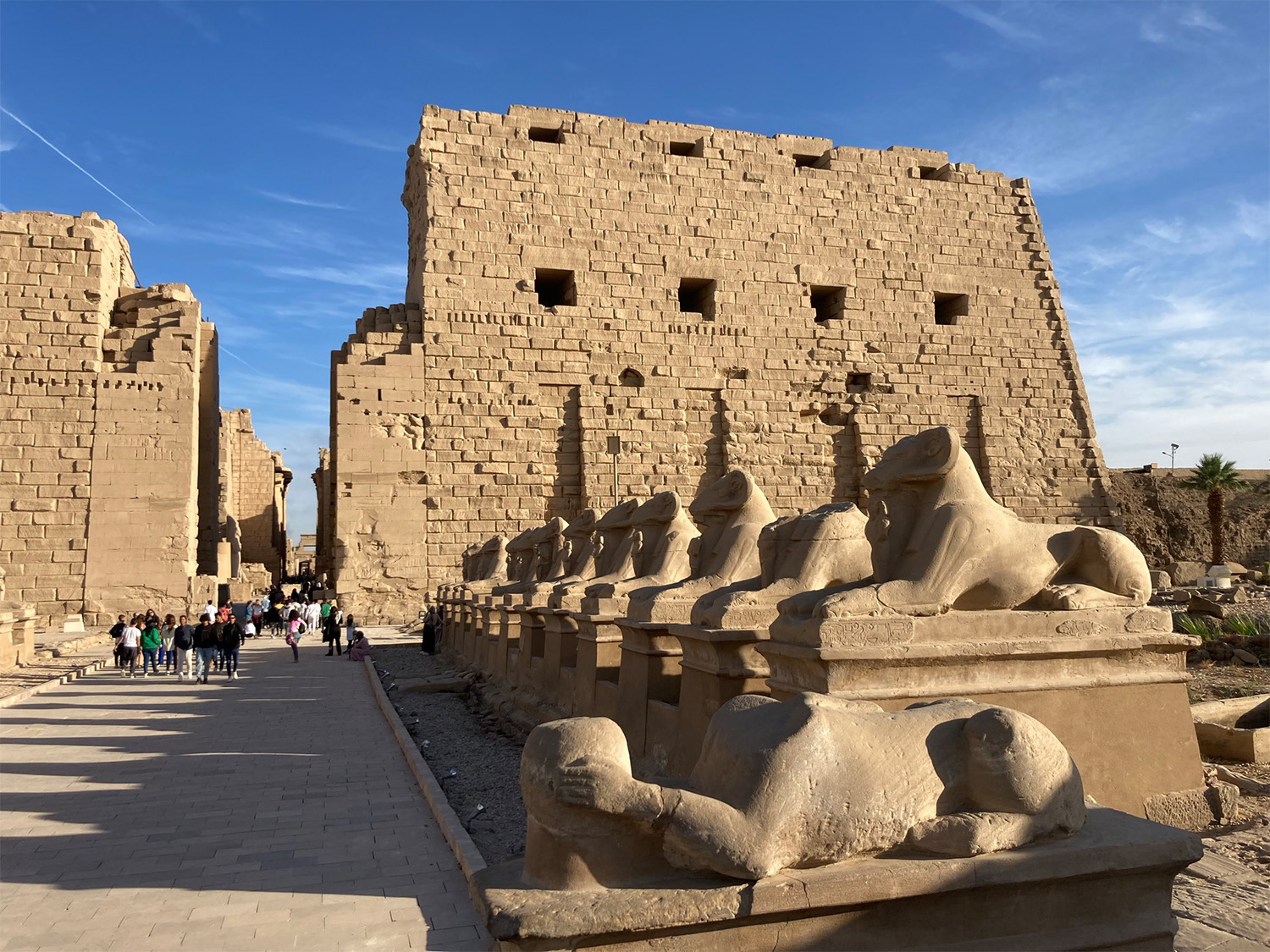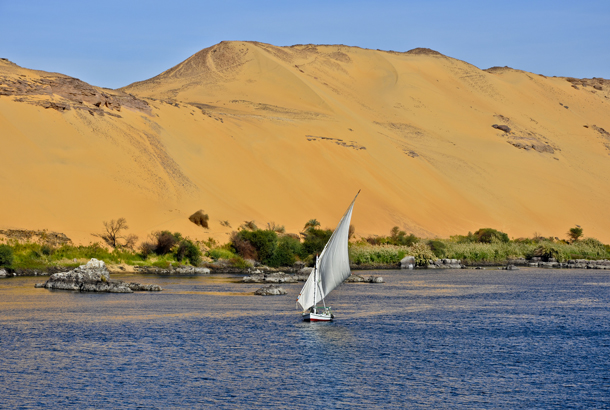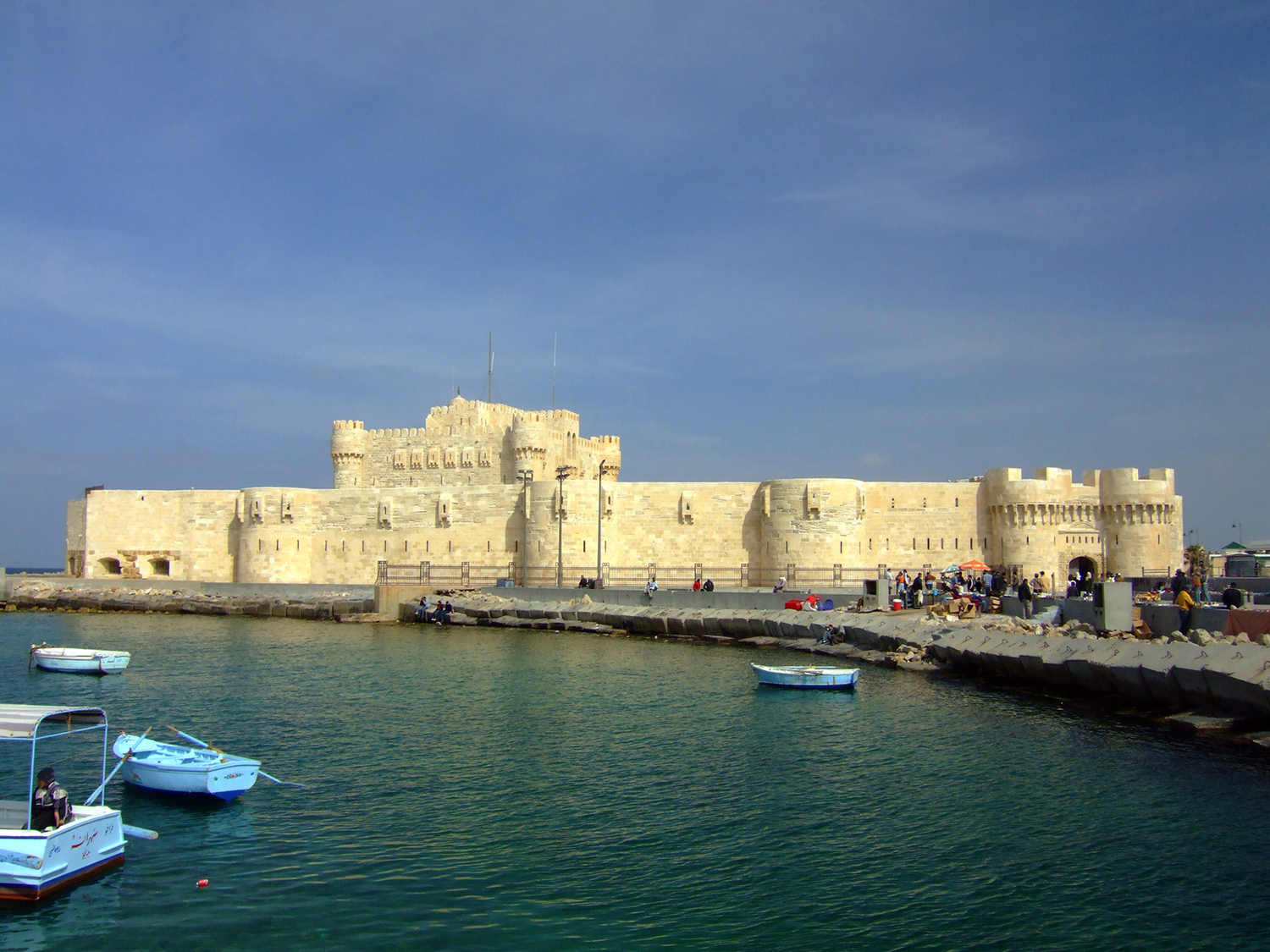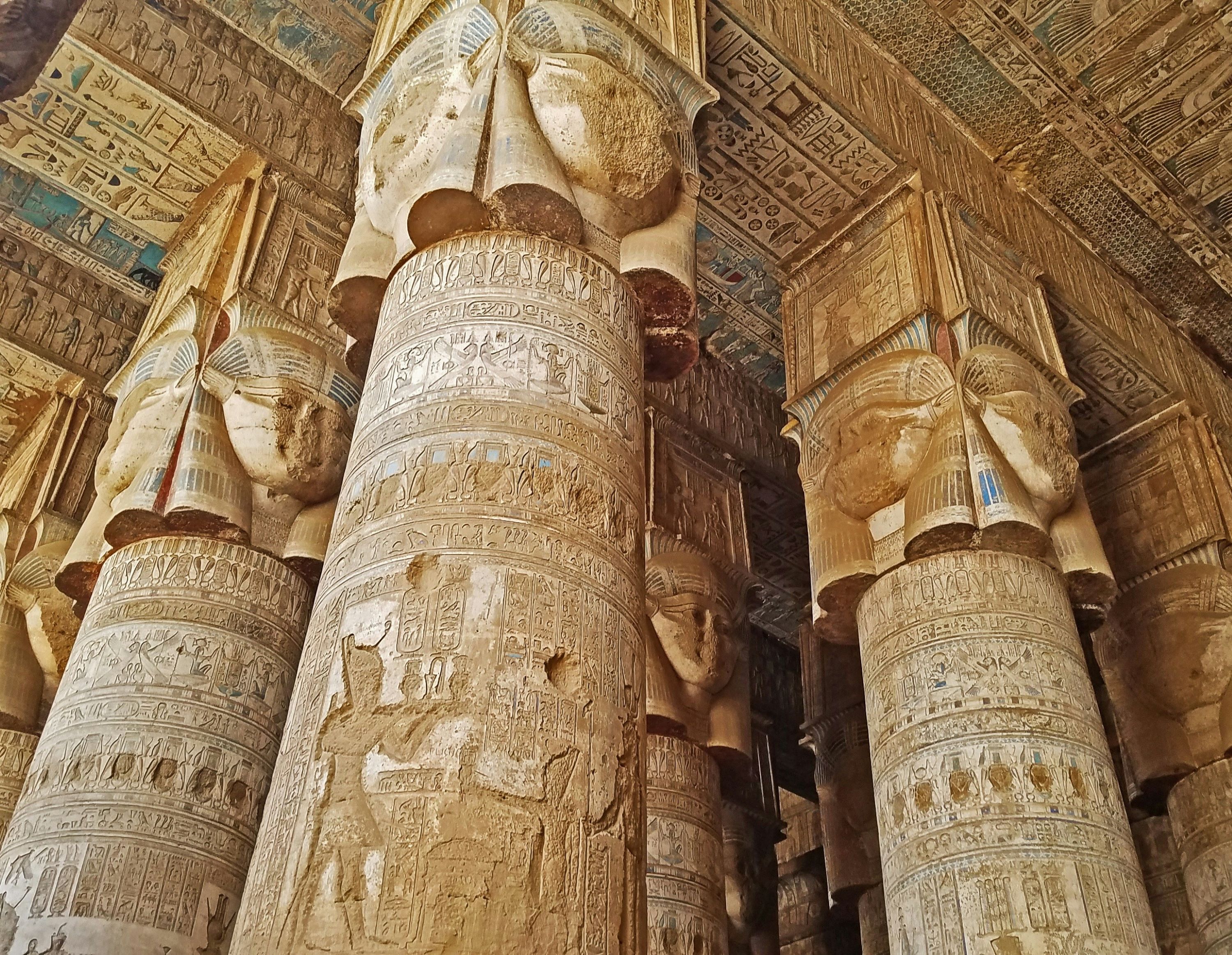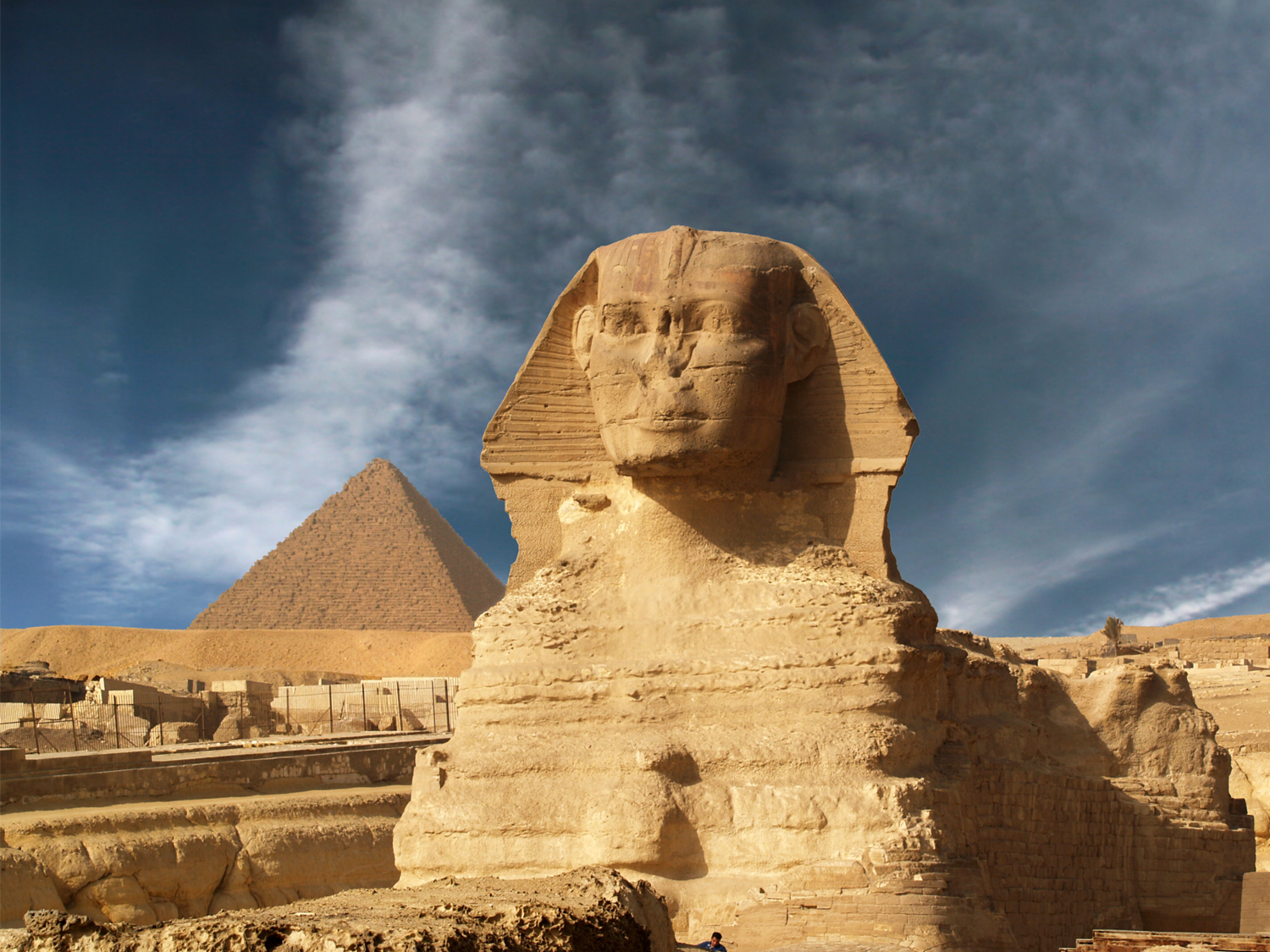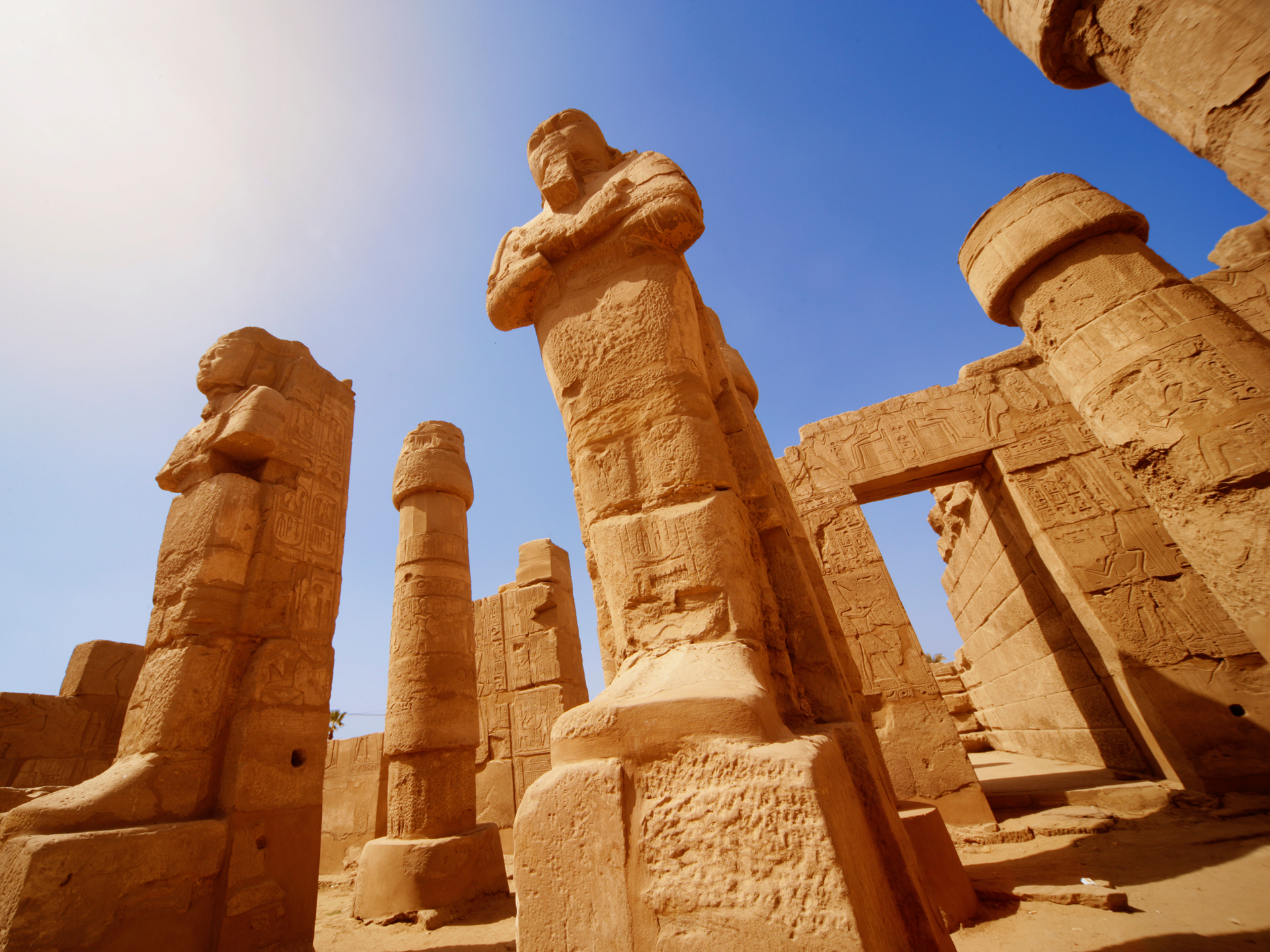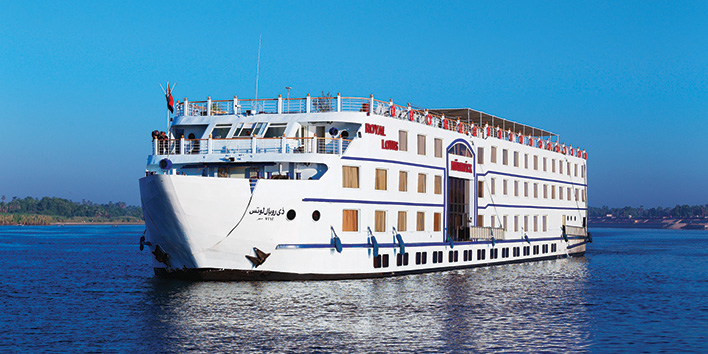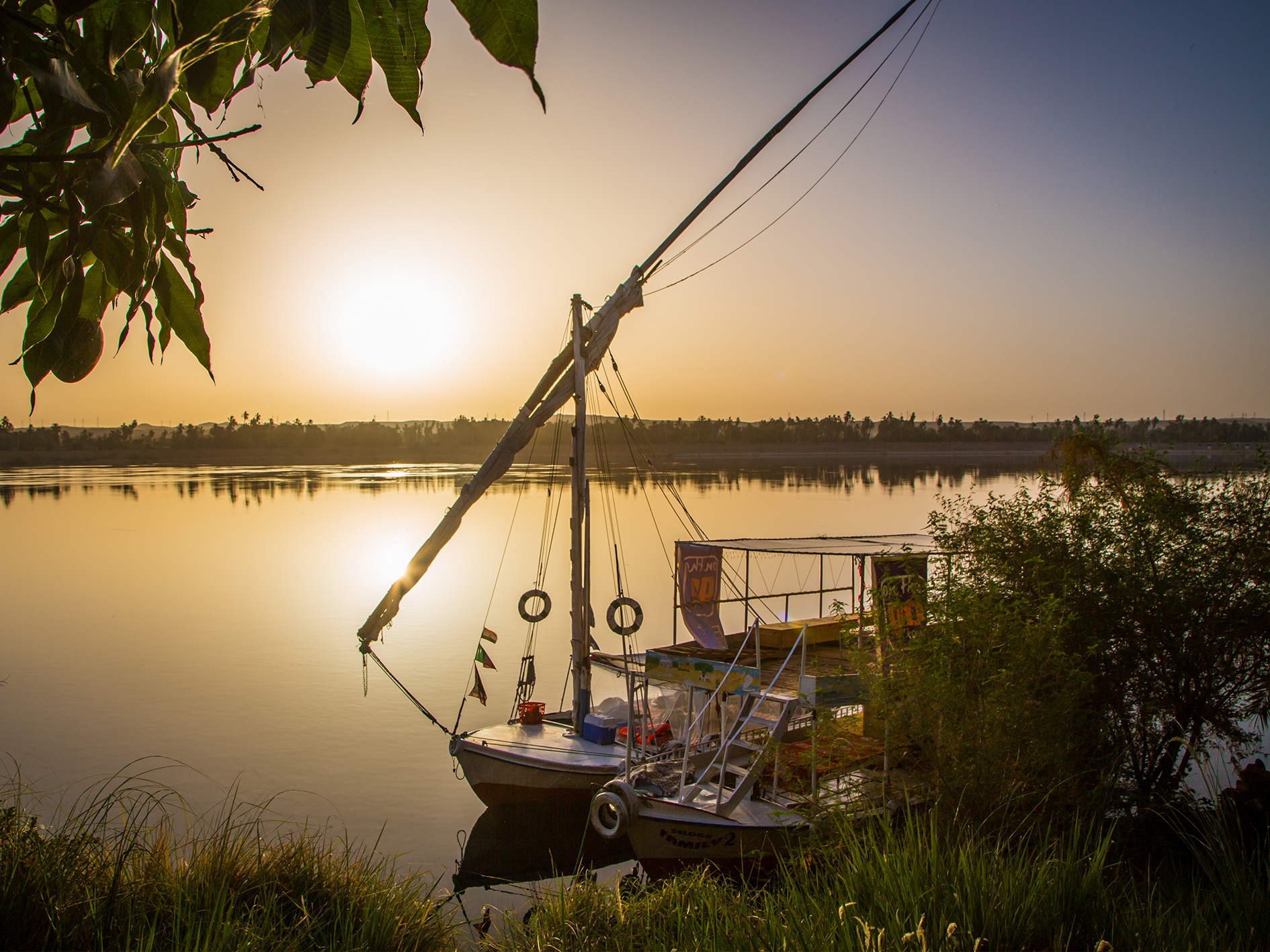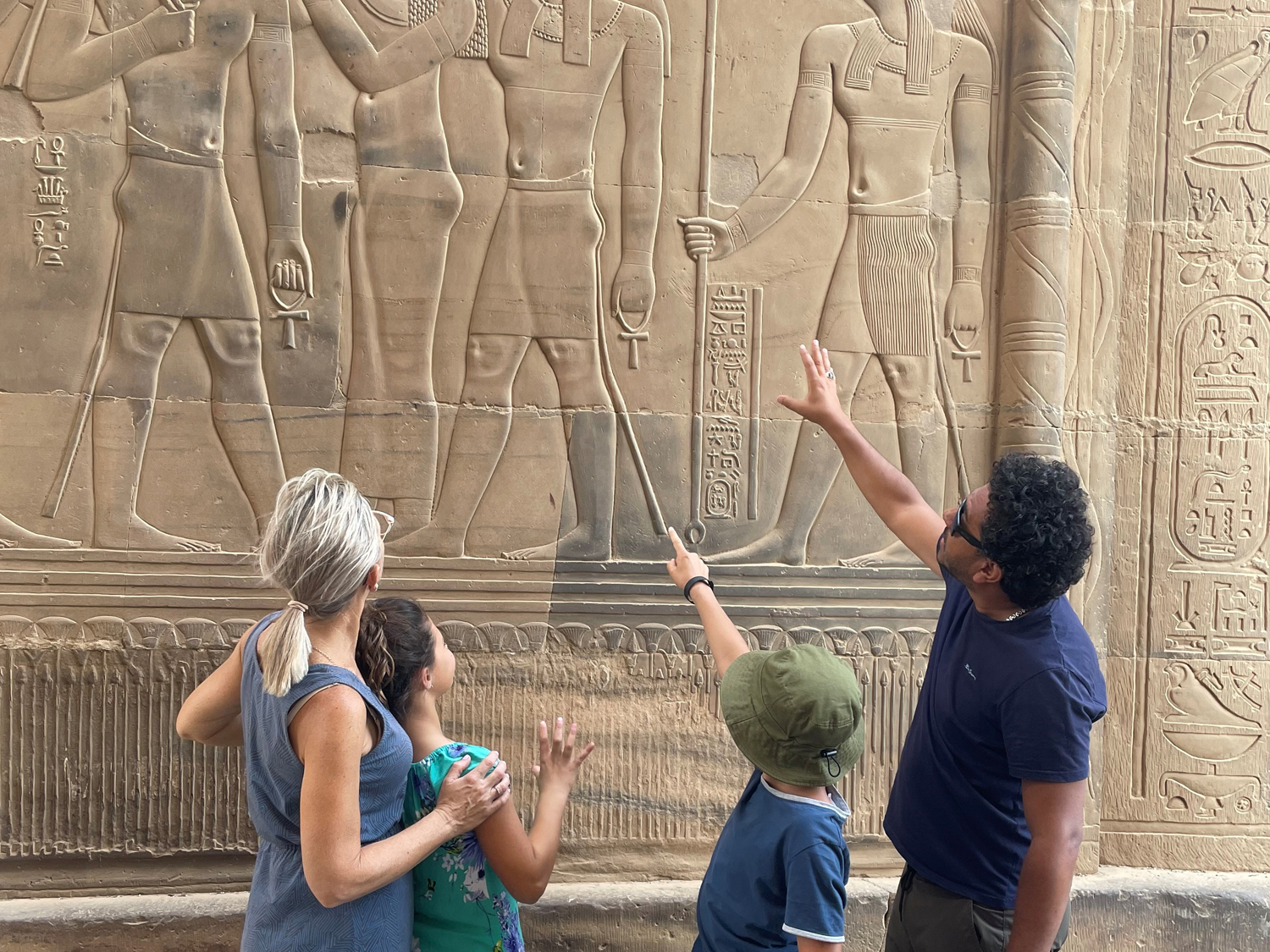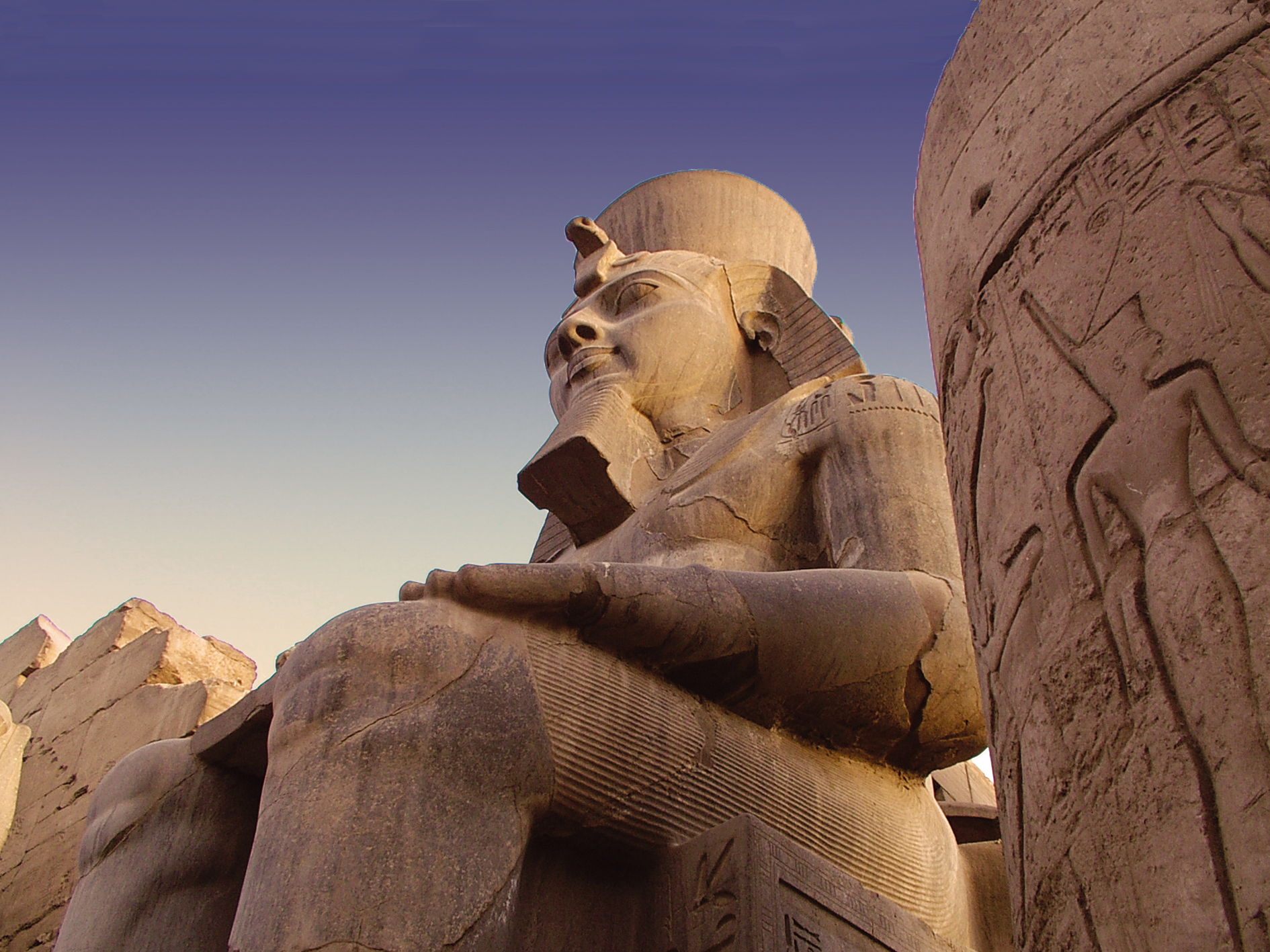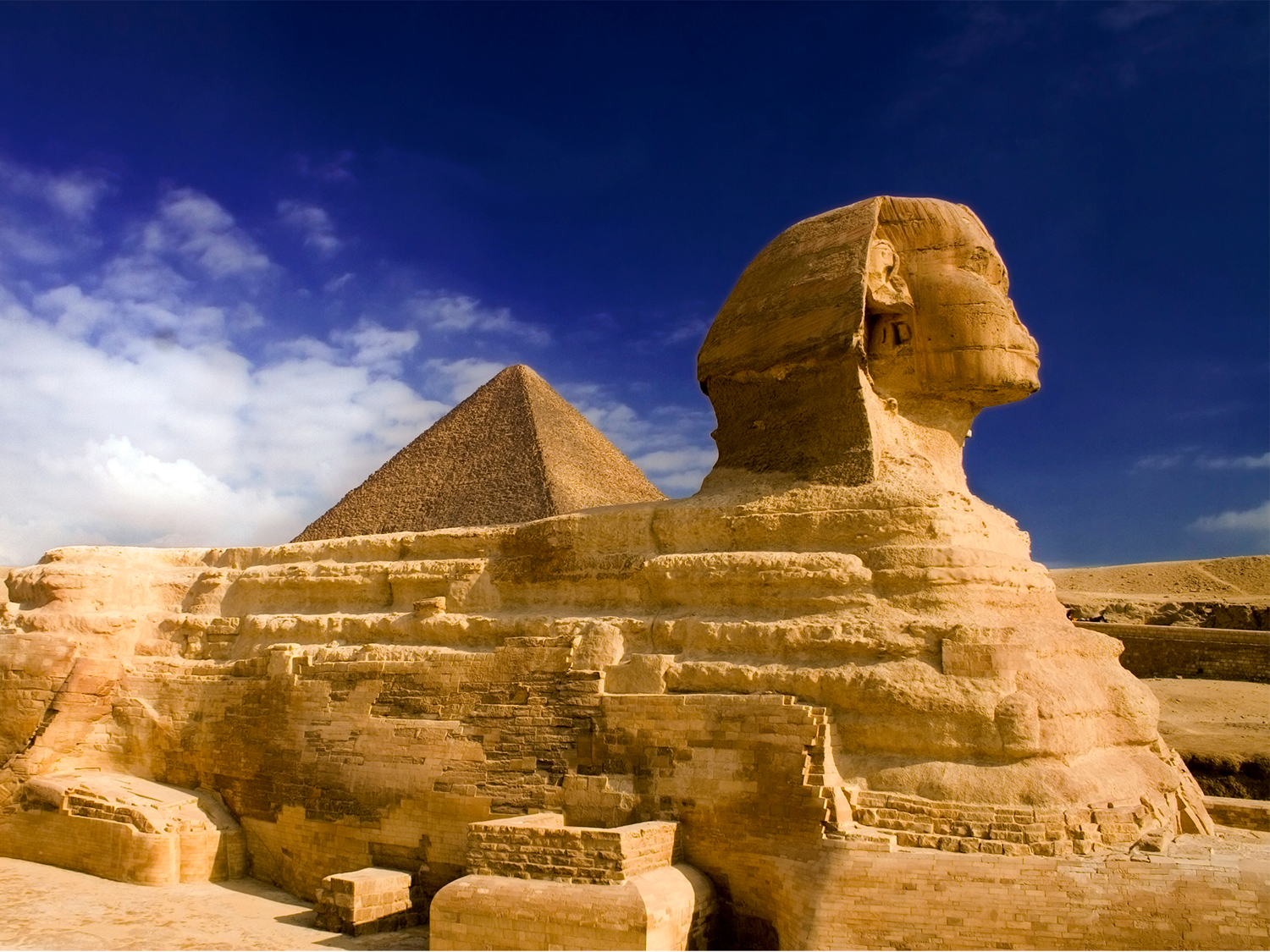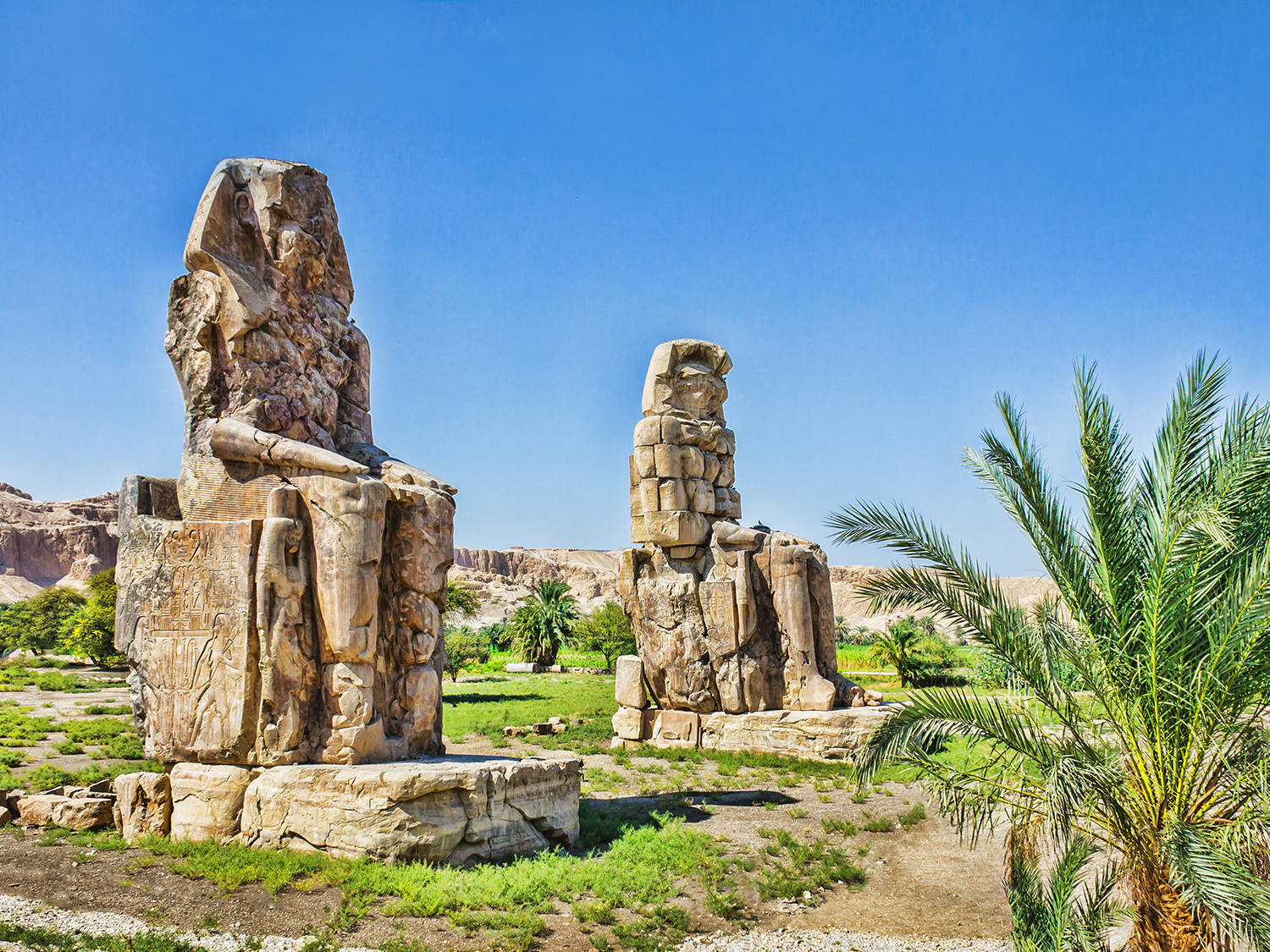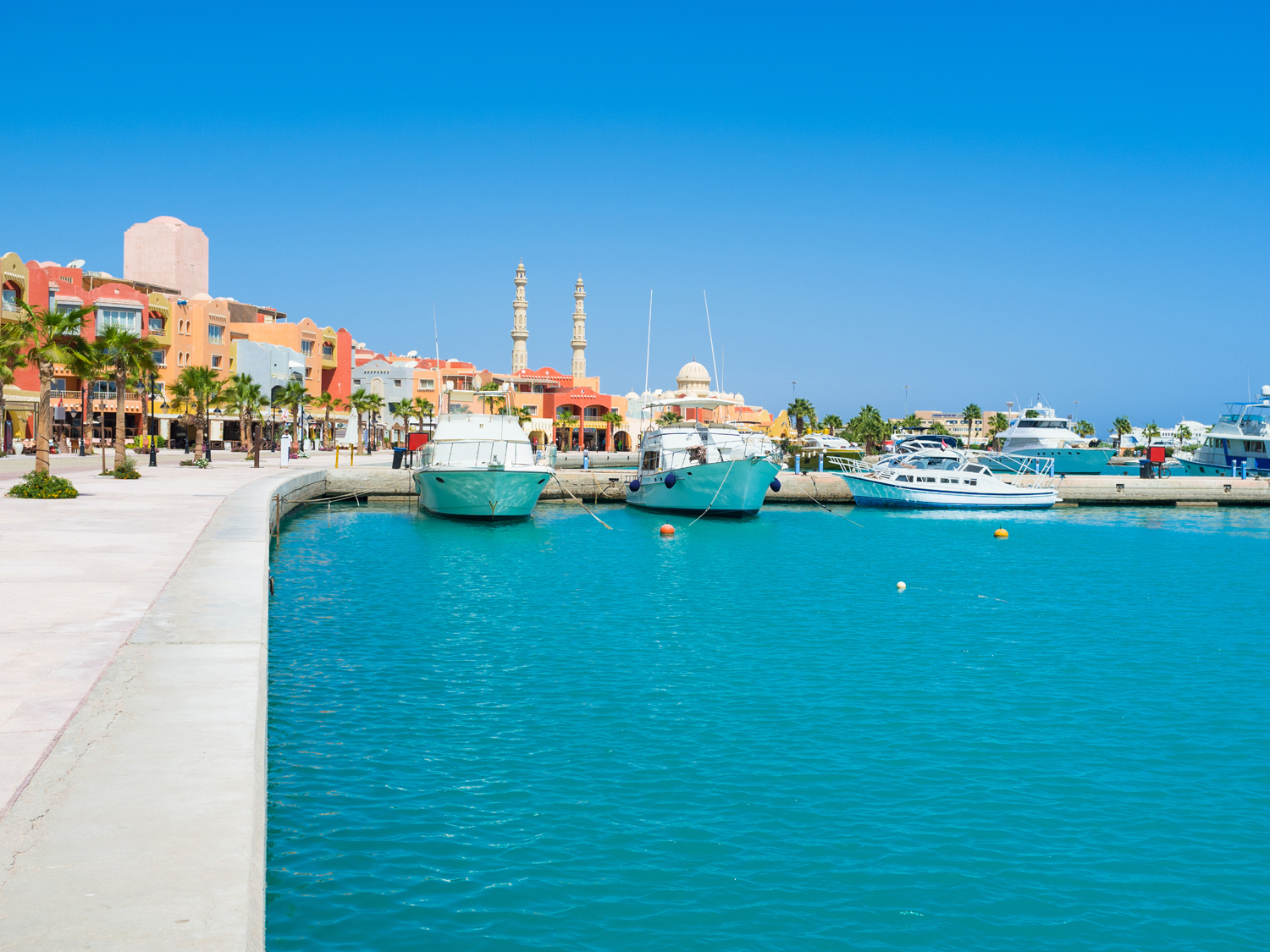The Highlights of Ancient EgyptDiscover the highlights of ancient Egypt on a group tour
When do you want to go?
2024
I'm flexible
Passengers
Adults (18+)
Children (0 - 17)
Ancient Egypt
Considered one of the world's greatest civilizations, with a history that spans close to 3,000 years, the Ancient Egyptian civilization left a compelling legacy in the many monuments that have survived the test of time. As one of the world's six civilizations to have emerged independently, Ancient Egypt has long intrigued anthropologists and today continues to draw travellers looking to discover mighty pyramids, impressive temples, sacred chambers and treasure-filled tombs. Here's a guide to the main highlights of Ancient Egypt.
A brief history of Egypt
The official history of Ancient Egypt begins in 3100 BC (Early Dynastic Period - c. 3050–2686 BC) when King Meni united the two kingdoms of Upper and Lower Egypt. Ancient Egypt's history is then divided into three Kingdoms - the Old Kingdom (2686–2181 BC) when the Pyramids were built, the Middle Kingdom (2055–1650 BC) which saw an explosion in art and literature, and the New Kingdom (1550–1069 BC), when many great temples were built. These Kingdoms are separated by Intermediate Periods, characterised by political instability. The glory of Ancient Egypt fell into decline in around 1070 BC, when Egypt effectively split back into two states.
The earliest settlements of Ancient Egypt concentrated on the Nile Valley at a time when the climate was much wetter and the lands much greener. Much of the success of Ancient Egypt is attributed to the way these people adapted to and utilized the ever-changing water levels of the River Nile. With clever irrigation systems and crop production, this was a civilization that was way ahead of its time. Ancient Egypt reached its peak during the New Kingdom, under the rule of some of the period's most well-known pharaohs including Tutankhamun, Ramses II, Amenhotep III and Queen Hatshepsut. The spoils of these rulers and their prosperity can be found dotted across Egypt from the bejewelled death mask of King Tutankhamun to the temples of Abu Simbel in the south. With such an illustrious history, it's little surprise that there's a wealth of ancient sites to visit in Egypt. From the world-famous attractions frequented by travellers from across the centuries to the lesser-known sites that remain peacefully quiet. Here's our guide to the best of what ancient Egypt has to offer.
The best of Ancient Egypt
The Great Pyramids of Giza
Arguably the most famous historical site in all of Egypt, the image of the Great Pyramids of Giza is synonymous with the ancient country. Located on the outskirts of Cairo, the pyramids were built over 4,500 years ago during the Fourth Dynasty of the Old Kingdom, these pyramids were constructed as monumental tombs for pharaohs, with the largest belonging to Pharaoh Khufu. Known for their precise engineering and massive scale, the pyramids reflect the Egyptians' advanced knowledge of mathematics and architecture. They remain one of the Seven Wonders of the Ancient World and continue to fascinate historians and visitors alike. No journey to Egypt would be complete without a visit to these symbols of ancient civilisation.
The Grand Egyptian Museum
The Grand Egyptian Museum (GEM) in Cairo, also known as the Giza Museum, is set to be one of the largest and most significant archaeological museums in the world. Located near the iconic Giza Pyramids, the museum is designed to showcase Egypt's rich ancient heritage, housing over 100,000 artifacts, including the complete collection of King Tutankhamun's treasures. Its architecture, blending modern design with traditional elements, aims to create a monumental space that highlights Egypt's ancient history. The museum's state-of-the-art conservation labs and exhibition spaces make it a cultural hub, enhancing Egypt's status as a global destination for history and archaeology enthusiasts. Once fully open, the GEM will offer an immersive journey through 5,000 years of Egyptian civilization.
Valley of the Kings
Visiting the Valley of the Kings is a dive into the rich history of ancient Egypt. The ancient burial site, located on the west bank of the Nile River, near Luxor, served as the final resting place for pharaohs and powerful nobles during the New Kingdom period (16th to 11th century BCE). The valley is renowned for its richly decorated tombs, carved into the limestone hills, and filled with elaborate hieroglyphics and artwork depicting the journey to the afterlife. Notable tombs include that of the boy-king Tutankhamun, which was discovered largely intact in 1922. The Valley of the Kings is a symbol of ancient Egyptian civilization and its intricate beliefs about death and immortality and is a must see on your tour of Egypt.
Kom Ombo
A unique double temple dedicated to two gods: Sobek, the crocodile god of fertility and creator of the world, and Horus, the falcon-headed god of the sky and protector of the pharaohs. Kom Ombo is a beautiful designed completely symmetrical temple located just off the Nile River. Built during the Ptolemaic dynasty between 180 and 47 BCE, the temple is distinctive for its symmetrical design, with twin entrances, halls, and sanctuaries, reflecting the duality of its deities. The temple also features intricate carvings and reliefs that depict religious scenes and medical instruments, revealing insights into ancient Egyptian medicine. Nearby, a fascinating crocodile museum displays mummified crocodiles, underscoring the sacred connection to Sobek.
Abu Simbel
Abu Simbel is a remarkable archaeological site located in southern Egypt, near the border with Sudan. It is best known for its two massive rock temples, built by the pharaoh Ramses II in the 13th century BCE during the New Kingdom period. The temples were constructed to honour the gods and celebrate Ramses II's military victories, particularly his triumph at the Battle of Kadesh. The larger temple is dedicated to Ramses II himself and the gods Amun, Ra-Horakhty, and Ptah, while the smaller temple honours his beloved queen, Nefertari, and the goddess Hathor. In the 1960s, the temples were relocated to higher ground to save them from being submerged by the waters of the Aswan High Dam's reservoir, Lake Nasser. The colossal statues at the entrance, each standing over 20 meters tall, are a stunning testament to the grandeur of ancient Egyptian engineering and artistry.
Karnak Temple
The Karnak Temple Complex, located near Luxor, is one of the largest and most significant ancient religious sites in the world. Spanning over 200 acres, it was developed over 2,000 years, from the Middle Kingdom (around 2050 BCE) to the Ptolemaic period. The complex is dedicated primarily to the Theban Triad of gods: Amun-Ra, Mut, and Khonsu. Its most iconic feature is the Great Hypostyle Hall, a vast space with 134 massive columns towering over visitors. The site also includes obelisks, sanctuaries, and intricate carvings, reflecting the power and devotion of successive pharaohs, making it a marvel of ancient Egyptian architecture and spirituality.
The Nile River
Take a cruise along the Nile River, the longest river in the world, which stretches over 6,600 kilometres (4,100 miles) and flows through north-eastern Africa. It has been a vital lifeline for civilizations throughout history, particularly ancient Egypt, where it provided fertile land, water for irrigation, and a means of transport. Its annual flooding deposited nutrient-rich silt along its banks, which supported agriculture and sustained the development of one of the world’s most remarkable ancient cultures. Today, the Nile remains crucial for the millions of people living along its course, supporting both agriculture and hydroelectric power.
Alexandria
Alexandria, Egypt's second-largest city, is a vibrant coastal metropolis with a rich history that stretches back to its founding by Alexander the Great in 331 BCE. Known as the "Pearl of the Mediterranean," Alexandria played a pivotal role in the ancient world as a hub of culture, knowledge, and trade. It was home to the famous Lighthouse of Alexandria, one of the Seven Wonders of the Ancient World, and the legendary Great Library, which symbolized the city’s status as a centre of learning. Take a tour to Alexandrea visiting historical landmarks like the Catacombs of Kom El Shoqafa and the Citadel of Qaitbay, alongside bustling markets, Mediterranean beaches, and a lively cultural scene. The city's unique atmosphere and historical significance make it a key destination for those interested in Egypt's past.
Dendera
The Dendera Temple Complex, located near the city of Qena in Egypt, is one of the best-preserved ancient temple sites in the country. Its most famous structure is the Temple of Hathor, dedicated to the goddess of love, beauty, music, and healing. Built primarily during the Ptolemaic period (305–30 BCE) and later expanded by Roman emperors, the temple's impressive architecture features stunning reliefs, including the renowned Dendera Zodiac. The complex also contains a sacred lake, sanatorium, and a crypt with mysterious reliefs. Its well-preserved state provides invaluable insight into the religious and cultural practices of ancient Egypt.
Sphinx
The Great Sphinx of Giza is one of the most iconic monuments of ancient Egypt, located on the Giza Plateau near the Great Pyramids. Carved from a single block of limestone, the Sphinx features the body of a lion and the head of a human, believed to represent the pharaoh Khafre. This magnificent statue, measuring about 240 feet (73 meters) long and 66 feet (20 meters) high, is thought to have been constructed during the Fourth Dynasty of the Old Kingdom, around 2500 BCE. Despite centuries of erosion and damage, it remains a testament to the artistry and engineering skills of ancient Egyptian civilization, captivating visitors and historians alike with its grandeur and the myriad of myths surrounding its origin and purpose.
Egypt guides
Start planning your journey to the land of the Pharaohs with our handy travel guide resources.
Highlights of Egypt
Our customers say
Excellent
4.4 out of 5 based on 275 reviews
